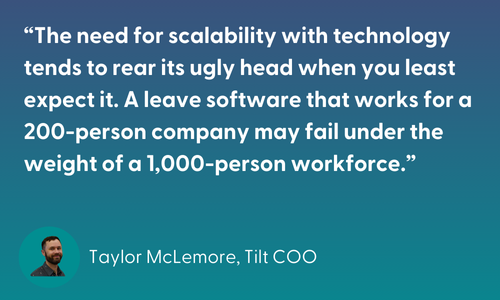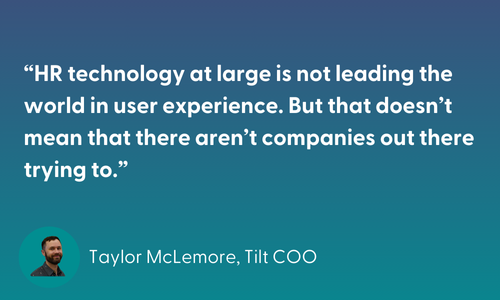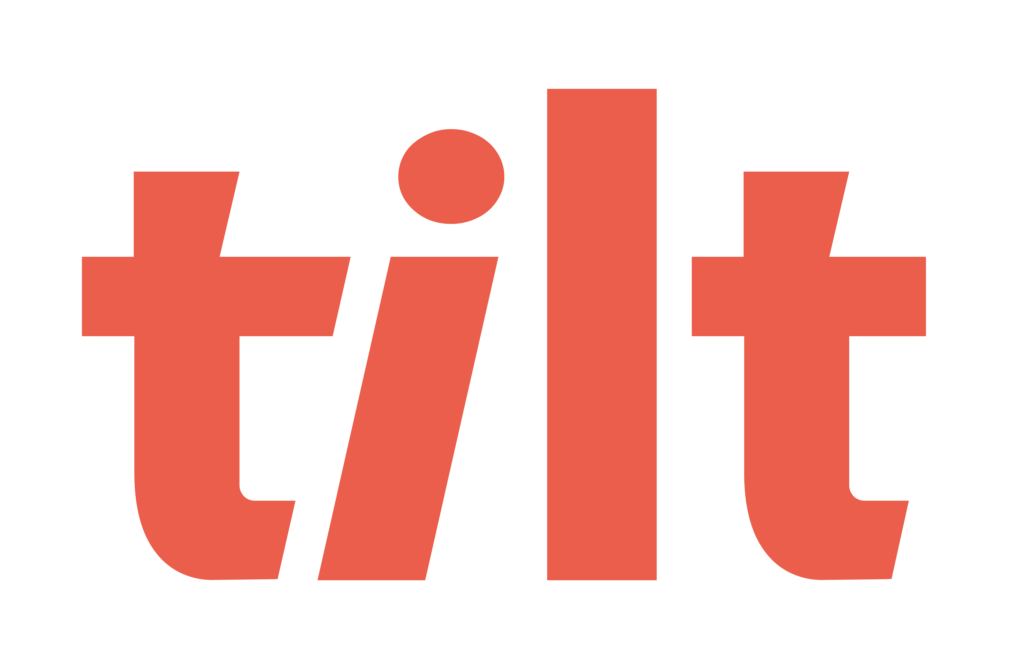HR is at a turning point. The rapid shifts in workforce expectations, the demand for seamless collaboration, and the constant pressure to do more with less aren’t going away. But here’s the good news: the right technology doesn’t just help HR teams keep up, it gives them the power to stay ahead.
Today’s most forward-thinking HR leaders aren’t stuck firefighting administrative headaches or wrestling with outdated systems. Instead, they’re leveraging smart, scalable technology to work more efficiently, drive strategic initiatives, and shape the future of their organizations. This is the moment for HR to take charge, demand tools that truly support their needs, and to step into a more proactive, empowered role.
However, not all HR tech is created equal. The key is choosing solutions that aren’t just powerful, but also intuitive, collaborative, and built to grow with your company.
Let’s explore what HR teams should look for in technology to ensure long-term success, stay ahead of workforce trends, and transform from reactive problem-solvers into forward-thinking strategists.
The HR Technology Imperative
HR technology should not just check boxes; it should empower teams. If you can find solutions that allow you to address your core functionalities efficiently, as an HR leader, you then possess the power to level up. You get to go from tactical to strategic, from reactive to proactive.
Too often, HR teams are stuck in administrative cycles, struggling with compliance, payroll accuracy, and manual leave management.
Yesterday’s software lacks the control HR teams need to ensure organizational consistency and transparency to keep track of everything in one place, and trust to get the job done.
Trust is paramount when selecting an HR technology because when systems are ineffective, it doesn’t just create internal frustration, it damages trust between employees and employers and erodes trust between HR and the vendor.
A mismanaged leave process, for example, can result in incorrect benefits being applied, missed payroll adjustments, or even wage clawbacks, all of which erode confidence in HR and leadership.
Technology should remove these burdens, allowing HR professionals to experience relief and to focus on the bigger picture.
What to Look for in Leave Software
Leave management has become a proving ground for HR to demonstrate value and separate their organization from the pack.
To gain a true competitive edge, however, HR teams need leave software that not only streamlines workflows but also positions them as strategic drivers within the organization. Here’s what to prioritize:
1. Scalability and Future-Proofing
One of the biggest mistakes organizations make is adopting technology that meets their current needs but falls apart as they grow. Tilt COO Taylor McLemore warns, “The need for scalability with technology tends to rear its ugly head when you least expect it. A leave software that works for a 200-person company may fail under the weight of a 1,000-person workforce.”

To avoid this pitfall, HR teams should seek solutions that adapt alongside the organization, whether through API integrations, automation, or AI-powered insights.
Your leave software should provide not only immediate relief but also long-term sustainability.
2. User-Friendly Design for High Adoption
The best technology in the world is useless if employees and managers struggle to use it. HR leaders should demand intuitive, easy-to-navigate platforms. As Taylor points out, “HR technology at large is not leading the world in user experience. But that doesn’t mean that there aren’t companies out there trying to.”
Adoption rates increase when software mirrors familiar consumer technology experiences. Features like guided workflows and automation for repetitive tasks ensure that HR teams, employees, and managers can all engage with the system effectively.
3. Proactive Workforce Planning and Visibility
HR teams need real-time insights into workforce capabilities. Technology should offer total visibility into all existing leaves as well as what known leaves are on the horizon to allow leaders to answer critical questions: How many employees are on leave? How prepared are we for upcoming workforce fluctuations?
These sorts of insights shift HR from reacting to leave requests at the last minute to proactively planning for workforce gaps. This kind of strategic visibility allows HR to partner with leadership in making data-driven decisions.
4. Collaboration-Enhancing Features
HR shouldn’t operate in a silo. Technology should facilitate better communication and alignment between HR, managers, finance, and leadership. Features like automated notifications, self-service portals, and integration with payroll and benefits systems ensure that all stakeholders are informed and involved in key HR processes.
Now is the time for HR to have the loudest, biggest voice they’ve ever had in telling the market what they need and what will help them be successful.
Tools that enable HR to collaborate seamlessly across departments ensure that they are seen as integral strategic partners rather than back-office administrators.
HR’s New Role: Leading With Technology
HR is no longer just about compliance and record-keeping. It is becoming a distributed function where leaders across departments are empowered with the right tools to manage workforce needs effectively. Taylor explains this shift: “HR isn’t a department on a different floor—HR practices are about how we make our people successful and therefore our business.”
The right HR technology enables department leaders to take more ownership of key HR functions, from leave management to workforce planning. Instead of HR being the sole problem-solver, modern software enables managers and employees to take a more active role in their HR experiences.

The Case for Leave Software: HR’s New Strategic Asset
HR is being relied on more heavily for driving business success, and with good reason because organizations are recognizing that people are their most valuable asset.
Yet oftentimes one of the most overlooked yet critical areas of HR technology is leave management, and that’s also for good reason, because legacy leave management methods are riddled with inefficiencies, from payroll errors to compliance risks, leading to unnecessary costs and administrative headaches.
Investing in modern leave software transforms leave from a logistical burden into a strategic asset that strengthens workforce planning, employee experience, and overall organizational resilience.
Advancements in HR analytics are equipping organizations to analyze vast amounts of information, leading to smarter, more strategic decisions.
A robust leave management system taps into this power, offering real-time insights into workforce availability, compliance adherence, and cost-saving opportunities. By integrating leave software with HRIS systems and payroll, organizations gain a seamless approach to workforce planning while ensuring employees receive accurate pay and benefits.
HR technology isn’t just an operational necessity—it’s a competitive advantage. Companies that invest in scalable, user-friendly, and collaborative HR tools (especially leave management solutions), are better positioned to attract and retain top talent, minimize risk, and drive long-term success.
Selecting the Right Leave Software
Choosing the right leave management software isn’t just about making HR’s job easier, it’s about giving the entire organization a competitive edge. The best leave software eliminates compliance risks, prevents payroll errors, and enhances workforce planning. It ensures employees feel supported during leave while helping HR teams stay ahead of trends rather than scrambling to keep up.
Tilt is built to do precisely that.
With automation that removes administrative burdens, real-time analytics that empower strategic decisions, and an intuitive design that ensures high adoption, Tilt helps HR teams move beyond outdated processes and take control of their leave programs.
In a business landscape where agility and accuracy matter more than ever, investing in the right leave software is a game-changer. With the right tools, HR teams can step into their full potential, leading more than just HR operations, but the future of the workplace itself.
Tilt is leading the charge in all things leave of absence management through easy-to-use tech and human touch. Since 2017, our proprietary platform and Empathy Warriors have been helping customers make leave not suck by eliminating administrative burdens, keeping companies compliant, and providing a truly positive and supportive leave of absence experience for their people.







